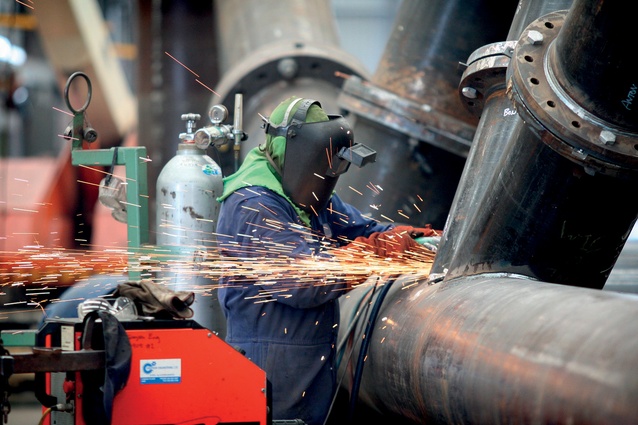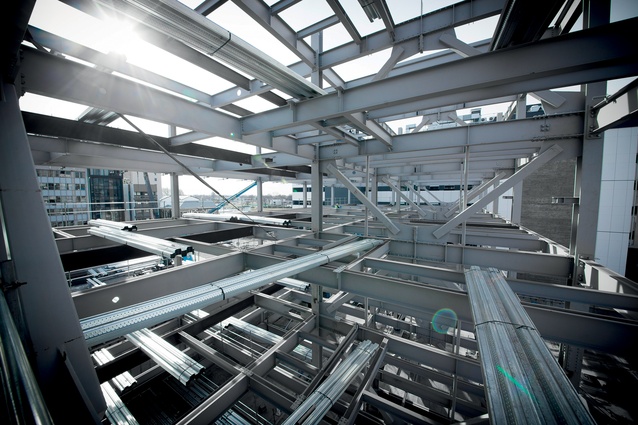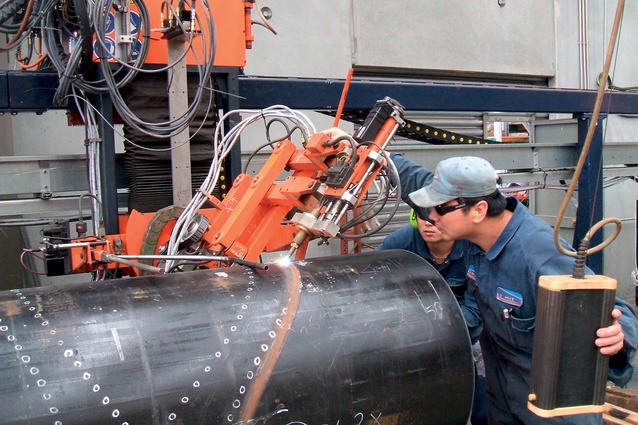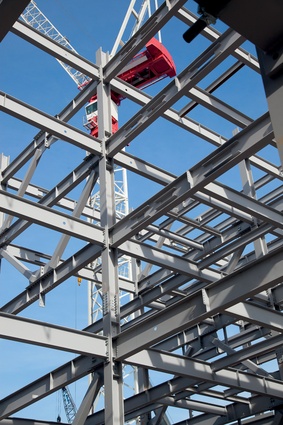Man of steel
Progressive Building talks to SCNZ manager Alistair Fussell about the state of the steel industry – and takes a look at a couple of additions to the steel products line-up.

Progressive Building: It is broadly accepted that we’ve been in a building boom for a while now, with an increased demand for steel – what kind of stresses has this placed on local suppliers?
Alistair Fussell: On the back of that demand, the industry has made quite a bit of investment in new plant and workshops since about 07/08. So really the industry over that period has invested and grown with the market. The trouble with the construction market is that it’s never a nice, gradual climb where you can predict a uniform market; you get peaks and troughs.
As you know, in 2008 the GFC came along and put a halt to things and now we’re really taking off again – Christchurch, for one, has really kicked in. There has been investment, which has helped, but with all the recent peaks – and they’re predicting more of the same over the next three or four years, particularly in the Auckland market with a number of large projects coming on stream – that’s why as an industry we’ve been looking to get a heads-up on demand in terms of what’s coming down the pipeline from the design offices, so that, at any given time, we can get a better visibility of projected demand over the succeeding six to 12 months.
Our guys have been doing a lot of work locally in which they’ve been dealing with smaller and medium-sized fabricators to get work done. We have already started looking at facilitating collaboration, if necessary, with Australian fabricators so that if there is a need to pull in more reserves for big projects, that option is there. So it’s just a mixture of how best to individually manage it. Is it better to get more resource or is the answer to collaborate with others rather than trying to do it themselves, so it’s really helping them to make good commercial decisions.
PB: How has that been received by the industry?
AF: Certainly in terms of the engineers we’ve been speaking with, they’re very keen on this process because they’re well aware that they have a lot of steel projects coming up and it’s a hot topic with them, as well as builders, quantity surveyors and our own industry, and everybody is concerned to make sure we don’t give the market a reason to think there’s not the capacity here and to look overseas to get the work done.
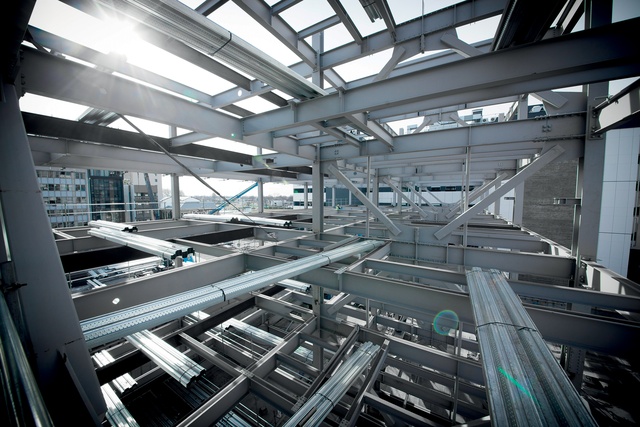
PB: Speaking of overseas, how is the local industry faring against Chinese steel?
AF: Not just Chinese steel. There are a couple of projects that look like they’re going to go with steelwork from Thailand. It’s the low-cost economy factor. In New Zealand it’s been primarily in the warehouse-type sector – low-rise, modular buildings – where we’ve seen, in the last 7 or 8 years, a little bit more of it coming into the market. Whereas, in what I would call the more substantial commercial office-type buildings market, we haven’t really seen a lot of imports; the notable exception being the Awly Building in Christchurch.
So really, the impact until recently has been negligible. Our businesses need to be busy; they’re very high-cost, capital intensive businesses, they invest a lot and it comes down to through-put in terms of return on investment. Obviously we’re keen to see as much business done locally as possible. We recognise, as an industry, that we operate in a global market and that we’re always only going to be one element of that market.
What we’re working towards is at least getting a level compliance playing field. If you don’t have the proper quality management systems in place and have proper independent inspectors and competent people to review it, you can’t, after the fact, determine whether the materials or the workmanship are compliant. At least it’s very difficult to determine that without doing destructive testing. It’s all about having the right systems in place up front to make sure that when that product arrives you’re confident that you can sign it off.
PB: Is that why the SCNZ introduced the Steel Fabricator Certification Scheme last year?
AF: We took the view that we wanted to be very pro-active in terms of our own industry and giving customers a point of difference between product that’s coming from overseas and the local product. We wanted to be able to give our clients peace of mind concerning local fabricators. We wanted to make sure that there were recognised standards of work in New Zealand and what we’re really trying to do is raise the bar around the processes that go into fabricated steel.
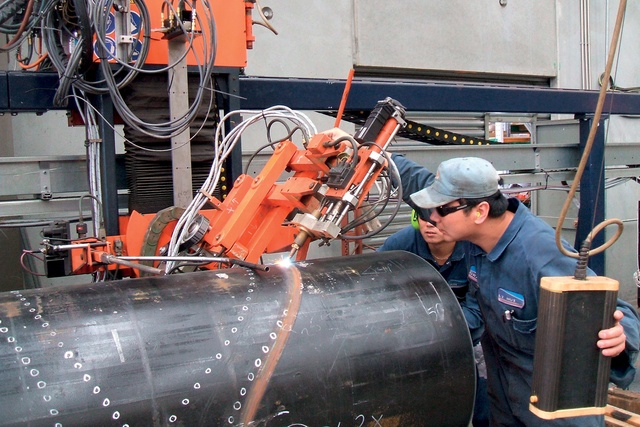
What the scheme does, is it requires the companies involved to have the appropriately qualified personnel. They need to have systems in place, along with procedures for doing things, and they need to have inspection test plans where they’re conducting checks and can sign off that they’ve passed at all the key stages of the fabrication. That’s why we’ve set up this scheme, so that everybody is working to a common standard and best practice is prevailing.
At the moment we’ve got about 65 per cent of New Zealand’s output covered by certified fabricators and we’re pretty comfortable that we’ve got the medium-to-large businesses on board. So now we’re concentrating on bringing the smaller fabricators into the scheme. We’re also looking at expanding to include the whole end-to-end process in the scheme.
PB: What about the government – how is it working towards levelling the playing field?
AF: The government’s always had rules of procurement, but in 2013 cabinet approved The Five Principles of Government Procurement. When you read the rules they say that the procurement practices of all government agencies – and there’s about 140 of them – have to be consistent with these five principles. At the time we applauded those principles because they required government procurers to consider the social, environmental and economic impact of making a decision.
So rather than just going with the lowest-cost supplier a whole raft of other factors have to be taken into account, which levels the playing field for all. By the same token, you can’t unfairly discriminate against an overseas supplier for not being a New Zealand company, or give someone brownie points just for being a New Zealand company.
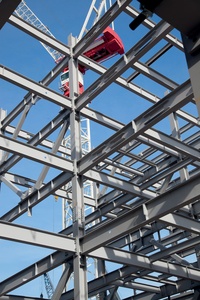
While we think the principles are great, our concern is that in all the government tenders we’ve seen, there has been no evidence of them asking for non-price attributes and saying: ‘please give us some information so we can evaluate the social, environmental and economic impact of procuring this building’. We’re not asking the government or the procurers to do anything that isn’t already enshrined in the government’s principles.
What’s frustrating and concerning us, is that they don’t appear to be implementing them. It’s fair to say that that’s been an area of active engagement with MBIE; to see them actually follow these rules or give them some substance. What’s actually happened is that while cabinet approved them, they have never given any substance or definition of what they actually meant by ‘social, environmental and economic impact’ and they therefore never developed any guidelines around them.
So, what’s happening is that because the principles lack any substance or definition, nobody’s implementing them. So, really, our involvement with MBIE has been to say: ‘you’ve got these great principles which we think are excellent, but yet nothing’s happened.’ Because there’s been nothing developed, nothing’s going out to the tender market with giving any recognition to it. So that’s where we sit with this issue and we’re ready to say to MBIE and the government: ‘love your principles… now give them some definition and substance and implement them.’

